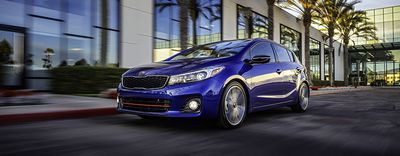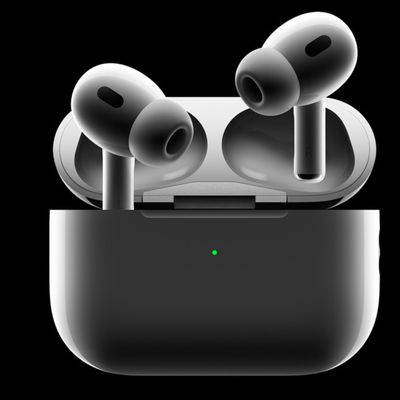New CarPlay Vehicles From Honda, Kia and Lincoln Debut at Detroit Auto Show
A trio of carmakers have unveiled new vehicles with CarPlay and Android Auto support at the North American International Auto Show in Detroit this month, including the 2017 Honda Ridgeline, 2017 Kia Forte5 and 2017 Lincoln Continental. All three models will be available in the first half of 2016.

Kia's all-new 2017 Forte5 will feature CarPlay and Android Auto support
The 2017 Ridgeline will mark Honda's return to the North American pickup truck market, which it exited after discontinuing the mid-size sport utility truck in 2014. Meanwhile, the 2017 Forte5 and 2017 Continental will be among Kia's and Lincoln's first CarPlay models in their vehicle lineups.
Honda's 2016 Accord and 2016 Civic also feature CarPlay and Android Auto, while Kia has indicated later availability in the 2016 Optima.
Lincoln is a luxury vehicle brand under Ford, which earlier this month announced it is adding CarPlay and Android Auto to all 2017 vehicles in North America equipped with its SYNC 3 platform. CarPlay and Android Auto will also be available in 2016 Ford vehicles with SYNC 3 as an upgrade later this year.
CarPlay has finally experienced widespread adoption in 2016, nearly three years after being introduced as "iOS in the Car" at WWDC 2013. Toyota is one of the only major vehicle brands without a future commitment to CarPlay, although the Japanese carmaker remains listed as a CarPlay partner on Apple's website.
The trio of new vehicles have yet to be added to Apple's new CarPlay available models list published on its website last week.
Popular Stories
Apple's next-generation iPhone 17 Pro and iPhone 17 Pro Max are less than three months away, and there are plenty of rumors about the devices.
Apple is expected to launch the iPhone 17, iPhone 17 Air, iPhone 17 Pro, and iPhone 17 Pro Max in September this year.
Below, we recap key changes rumored for the iPhone 17 Pro models:Aluminum frame: iPhone 17 Pro models are rumored to have an...
The long wait for an Apple Watch Ultra 3 appears to be nearly over, and it is rumored to feature both satellite connectivity and 5G support.
Apple Watch Ultra's existing Night Mode
In his latest Power On newsletter, Bloomberg's Mark Gurman said that the Apple Watch Ultra 3 is on track to launch this year with "significant" new features, including satellite connectivity, which would let you...
The upcoming iPhone 17 Pro and iPhone 17 Pro Max are rumored to have a slightly different MagSafe magnet layout compared to existing iPhone models, and a leaked photo has offered a closer look at the supposed new design.
The leaker Majin Bu today shared a photo of alleged MagSafe magnet arrays for third-party iPhone 17 Pro cases. On existing iPhone models with MagSafe, the magnets form a...
The iPhone 17 Pro Max will feature the biggest ever battery in an iPhone, according to the Weibo leaker known as "Instant Digital."
In a new post, the leaker listed the battery capacities of the iPhone 11 Pro Max through to the iPhone 16 Pro Max, and added that the iPhone 17 Pro Max will feature a battery capacity of 5,000mAh:
iPhone 11 Pro Max: 3,969mAh
iPhone 12 Pro Max: 3,687mAh...
iOS 26 and iPadOS 26 add a smaller yet useful Wi-Fi feature to iPhones and iPads.
As spotted by Creative Strategies analyst Max Weinbach, sign-in details for captive Wi-Fi networks are now synced across iPhones and iPads running iOS 26 and iPadOS 26. For example, while Weinbach was staying at a Hilton hotel, his iPhone prompted him to fill in Wi-Fi details from his iPad that was already...
Apple today seeded the second betas of upcoming iOS 18.6 and iPadOS 18.6 updates to public beta testers, with the betas coming just a day after Apple provided the betas to developers. Apple has also released a second beta of macOS Sequoia 15.6.
Testers who have signed up for beta updates through Apple's beta site can download iOS 18.6 and iPadOS 18.6 from the Settings app on a compatible...
Apple's position as the dominant force in the global true wireless stereo (TWS) earbud market is expected to continue through 2025, according to Counterpoint Research.
The forecast outlines a 3% year-over-year increase in global TWS unit shipments for 2025, signaling a transition from rapid growth to a more mature phase for the category. While Apple is set to remain the leading brand by...
Apple is developing a MacBook with the A18 Pro chip, according to findings in backend code uncovered by MacRumors.
Subscribe to the MacRumors YouTube channel for more videos.
Earlier today, Apple analyst Ming-Chi Kuo reported that Apple is planning to launch a low-cost MacBook powered by an iPhone chip. The machine is expected to feature a 13-inch display, the A18 Pro chip, and color options...





















